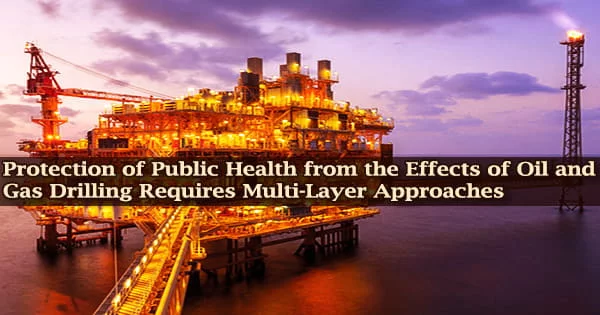Increased setbacks, and the minimum permissible distance between drilling and houses, schools, and other sensitive places, are just a few examples of the single measures that are frequently the focus of efforts to reduce the potentially negative consequences of oil and gas drilling.
However, a group of public health specialists from various colleges and organizations recommends the adoption of a multi-layered strategy when formulating laws to reduce the impact of gas and oil extraction operations in a commentary published in Environmental Research Letters on July 6. They present a framework for decision-making that, according to them, would make it easier to implement additional preventive measures for the public’s health.
“Oil and gas development can emit multiple hazards and therefore requires multiple solutions to protect communities and the environment,” said Nicole Deziel, Ph.D., the paper’s lead author and an associate professor of epidemiology (environmental health sciences), environment and chemical and environmental engineering at Yale University.
“Our paper provides a framework for policymakers, industry, and community leaders to weigh which approach or combination of approaches would be most effective for a given scenario.”
Millions of Americans are now at risk from a variety of OGD-related risks as a result of the industry’s expansion in the oil and gas development (OGD) sector.
In 2020, there were expected to be close to one million operational oil and gas wells, and according to a 2017 analysis, 17.6 million Americans lived less than a mile or 1,600 meters from an active well. There is growing proof that OGD causes health hazards, such as air pollution, water contamination, noise, and psychosocial stress.
It is important to note that increasing setbacks, the distance between a home and oil and gas drilling site, doesn’t do anything to mitigate impacts on climate change or regional ozone.
Lisa McKenzie
According to studies, living near oil and gas production is associated with higher rates of asthma, hospitalizations, cancer, and worse pregnancy outcomes. Some drilling-related operations have been situated close to areas with less resources, which has increased the cumulative burden of environmental and social injustices on such populations.
The authors discuss the benefits and drawbacks of the different control mechanisms in their paper. The diverse array of potential emissions, including noise, air pollution, greenhouse gases, and increased local truck traffic, make some remedies, such engineering controls, which are normally thought to be fairly successful at capturing pollutants at the source, potentially insufficient.
Contrarily, cutting back on new drilling and appropriately closing down active and inactive oil and gas wells would be most successful because it gets rid of the majority of environmental stresses at their source.
“It is important to note that increasing setbacks, the distance between a home and oil and gas drilling site, doesn’t do anything to mitigate impacts on climate change or regional ozone,” said Lisa McKenzie, a co-author of the paper and associate professor at the Colorado School of Public Health, University of Colorado Anschutz Campus.
Deziel said, “Although phasing out drilling may sound like a substantial departure from the status quo, it’s important to note that many states and municipalities are already taking steps to do so, such as Los Angeles which has approved a ban on all new oil and gas wells.”
The authors recommend scientists and practitioners take a more integrated approach.
Senior author of the commentary and professor at the School of Public Health and Department of Environmental Science, Policy, and Management at UC Berkeley, Rachel Morello-Frosch, expressed her hope that the commentary’s findings and suggestions would be helpful to risk managers, policymakers, and local residents alike and would encourage interventions that more thoroughly safeguard community environmental health.
Other co-authors include Joan A. Casey (Columbia University Mailman School of Public Health), Thomas E. McKone (School of Public Health, University of California, Berkeley), Jill E. Johnston (Keck School of Medicine, University of Southern California), David J.X. Gonzalez (School of Public Health, University of California, Berkeley) and Seth Shonkoff (PSE Healthy Energy).





